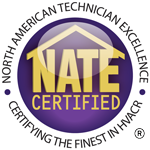Saving Money the Smart Way: Automating Your Home HVAC

June 10, 2020
Smart thermostats are not a new concept, but many people still view them as a luxury. Their flashy screens and high-tech array of features might be the first thing you notice, but these devices offer one incredibly practical benefit — they can save you money. If you're worried about climbing utility bills, then smart thermostats can play a key role in increasing your home's energy efficiency.
Identifying Energy Efficiency Trouble Spots
If you want to understand how you can save money on your monthly utility bills, you first need to know where your HVAC system may be wasting energy. For most homes, there are four significant sources of trouble:
- Home envelope losses
- Duct leakage
- Old, inefficient equipment
- Usage
Addressing the first three issues will require repairs or costly upgrades. While you should always consider these improvements worthwhile, they may not be within your budget. On the other hand, your home may already be well-sealed against the environment with a newer, energy-efficient furnace or AC system. In these cases, adjusting how you use your system can offer the greatest benefits.
For most people, adjusting usage means choosing slightly cooler temperatures in the winter and slightly warmer temperatures in the summer. Another way to modify your usage is by leveraging the concept of setbacks. When you set your thermostat back, you adjust the temperature to a less comfortable level when you are not home. These two simple usage adjustments can save significant cash.
Automating Your Usage With Smart Devices
If you think that continually adjusting your thermostat sounds like an arduous process, then you aren't alone. The EPA has recommended setbacks for years, but many homeowners still do not take advantage of this simple technique. Smart thermostats offer a way for you to increase your energy efficiency without the added work of adjusting your target temperature throughout the day.
Newer smart devices can be particularly beneficial since these units offer options beyond the simple timers found on some older thermostats. With a smart thermostat, you can set weekly and even monthly schedules. These options allow you to customize your thermostat's schedule to fit your daily routine, ensuring that your house always maintains a comfortable temperature while you are at home.
In addition to scheduling, many smart thermostats come equipped with motion sensors. By detecting nearby motion, your thermostat can fall back to a lower energy routine even if you have not created a schedule. This feature allows you to take advantage of setbacks even when you leave your house outside of your regularly scheduled routine.
Improving Efficiency with Sensors
There's another aspect of HVAC system usage that may seem even more challenging to address: area heating or cooling. Even with a zoned system, you will often waste energy cooling parts of your home that are currently unoccupied. Fortunately, many smart thermostats come with sensors that can help alleviate this problem.
A typical thermostat monitors the temperature in its immediate area, shutting down your air conditioner or heater when the ambient temperature reaches your desired level. Smart thermostats can use remote sensors that allow them to monitor the temperature in multiple rooms. Combined with motion detectors, your thermostat can favor heating or cooling only occupied areas.
Remote sensors are no replacement for true HVAC zoning, but they can help to save energy in cases where thermostat placement may not be ideal. These sensors can also improve the efficiency of homes that already have zoning by allowing more granular control of temperature within a zone. This latter benefit can be especially helpful in larger homes with few occupants.
If you're ready to automate your home's HVAC system, then Service 1 Plumbing, Heating & A/C Inc. can help get it done. Get in touch with us today to plan out your new smart home.




